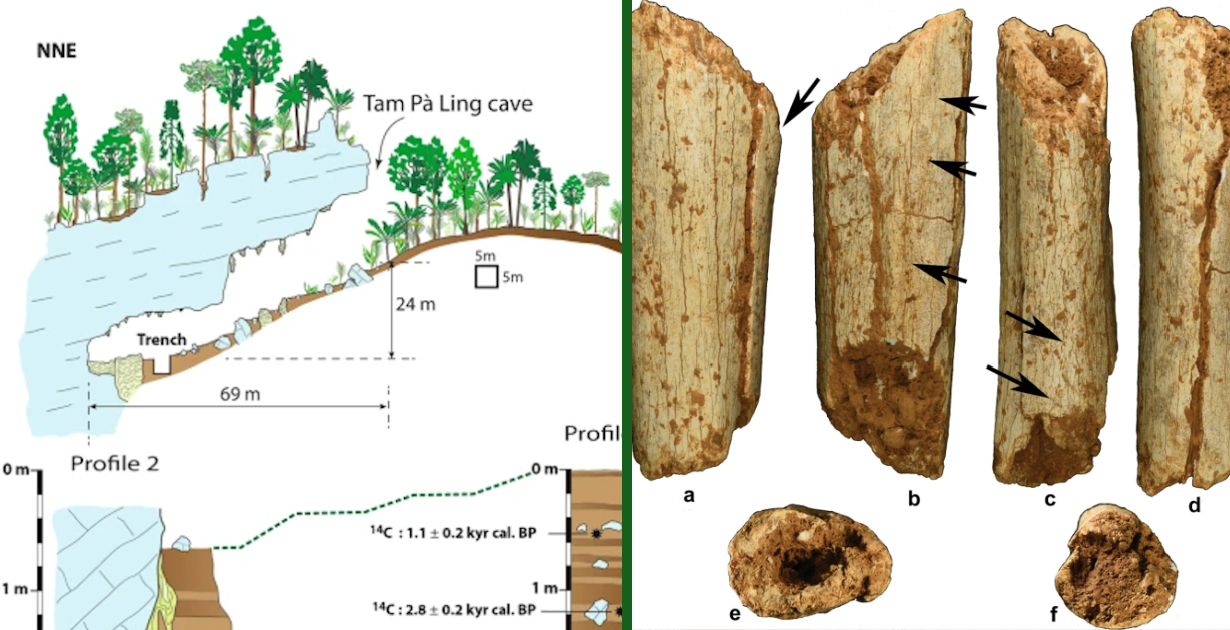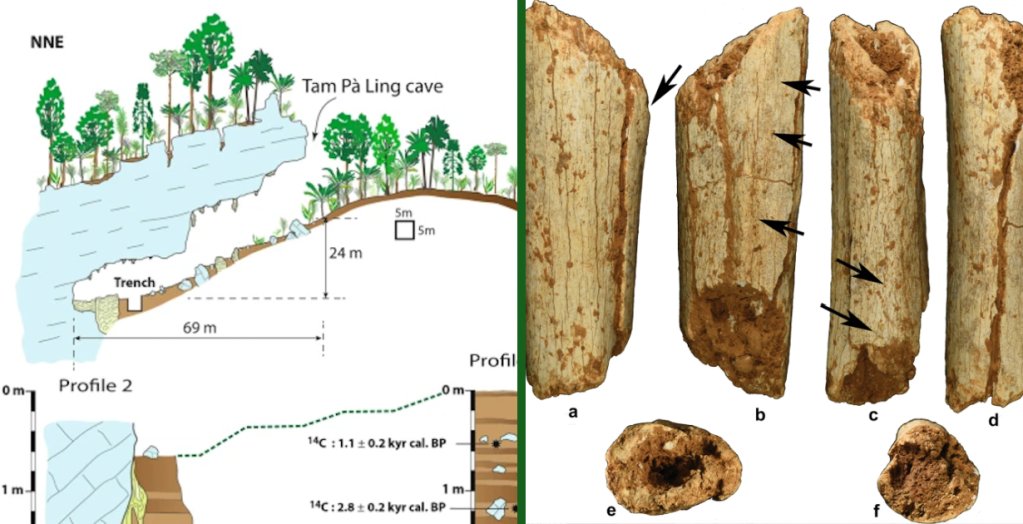
When thinking about the history of human migration, and how homo sapien and their counterparts dispersed all over the world, thinking about how people found their way to Australia really boggles the mind.
This recent discovery now says that might have happened even earlier than anyone ever realized.
Image Credit: Nature Communications
The remains were discovered in a cave in Laos, where human fossils were found in 23 feet of sediment.
The Tam Pa Ling cave is an important stop on the journey from Africa to Southeast Asia and then Australia, according to the findings published in Nature Communications.
“Tam Pa Ling plays a key role in the story of modern human migration through Asia, but its significance and value is only just being recognized.”
This find is not the first significant find in the cave, either; when human remains were first found there in 2009, it was the first evidence that humans might have stayed inland and not just passed by while migrating by sea.
Image Credit: Nature Communications
The estimated age of those first pieces of evidence was 46,000 years, but new dating techniques have pushed that back to between 68,000 and 86,000 years.
The archaeologists involved claim that the find shows humans have lived in the region for more than 56,000 years, and that the deepest fragment of leg bone – around 86,000 years old – would alter the time we believe humans arrived in Southeast Asia.
“This really is the decisive paper for the Tam Pa Ling evidence. Finally, we have enough dating evidence to confidently say when Homo sapiens first arrived in this area, how long they were there and what route they may have taken.”
Image Credit: Nature Communications
The fossils in question have also raised more questions about what sort of native hominins populated the area, too.
The caves on Laos are full of more mysteries, and scientists are anxious to solve them in the years to come.
